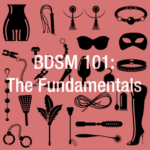BDSM—an acronym encompassing Bondage & Discipline, Dominance & Submission, and Sadism & Masochism—is far from a new phenomenon. While the practices themselves can be traced back to ancient times, the formation of modern BDSM culture as we know it today is a more recent, layered, and fascinating evolution rooted in psychology, counterculture, and sexual liberation.
This article explores the trajectory of BDSM from historical roots to contemporary communities—how it broke free from shame, embraced structure, and redefined intimacy.
Ancient Shadows: Early Echoes of Power Play
Long before “BDSM” was coined, humanity explored power, pain, and eroticism through ritual, punishment, and pleasure.
- Ancient Egypt & Greece: Hieroglyphs and texts suggest the use of erotic flagellation and ritual pain within sacred sexual practices.
- Roman Times: Sexual domination and submission were prevalent in art, literature, and the culture of conquest.
- The Kama Sutra (circa 2nd century CE) included chapters on consensual pain and biting, scratching, spanking—many of the same sensations explored today.
However, these early practices were not organized under a shared identity or ethical code—they were more cultural expressions than structured subcultures.
19th Century: Victorian Eroticism & Early Medical Pathologizing
The roots of modern BDSM truly begin in the 1800s, with the rise of psychological science, underground erotic literature, and the sexual repression of the Victorian era.
- The Birth of “Masochism” & “Sadism”:
- Leopold von Sacher-Masoch, whose novel Venus in Furs depicted consensual submission and female domination, lent his name to “masochism.”
- Marquis de Sade, infamous for his violent erotica, gave rise to the term “sadism.”
- The terms were coined by Richard von Krafft-Ebing in Psychopathia Sexualis (1886), which cataloged “sexual perversions” including consensual pain and power exchange.
Though pathologized by doctors, underground communities began recognizing themselves in these depictions—and building language and identity around it.
20th Century: From Deviance to Community
The 1940s–1950s: Leather, War, and Brotherhood
After WWII, returning soldiers—particularly queer men—created tight-knit “leather communities” built on discipline, honor, and homoerotic ritual. These groups would become the foundation of organized BDSM in the West.
- The first leather bars opened in the U.S., like The Tool Box (San Francisco) and The Gold Coast (Chicago).
- Codes of dress (leather, boots, chains) and conduct emerged.
- Protocols and roles (Dom/Top, sub/bottom, Master/slave) became part of a larger identity.
This era was underground, coded, and often persecuted—but it was also the beginning of BDSM as culture, not just kink.
1960s–70s: Sexual Liberation and Visibility
The Sexual Revolution cracked the door open:
- Kinsey Reports (1948 & 1953) showed a surprising number of Americans had experimented with spanking, bondage, and fantasies of domination.
- Feminist erotica and sexual freedom movements expanded public discourse around “taboo” desires.
- BDSM began to appear in literature (Story of O, 1954) and later, film (The Night Porter, 1974).
During this time, BDSM communities began organizing more formally:
- The Society of Janus was founded in San Francisco in 1974—one of the first public BDSM education groups.
- Safe spaces and peer-led workshops became the norm, offering negotiation skills, safety tips, and consent frameworks.
The AIDS Crisis and the Rise of Risk-Aware Practices (1980s–1990s)
While the AIDS epidemic devastated LGBTQ+ and kink communities, it also forced the development of rigorous safety protocols, laying the groundwork for the now-standard models of:
- Safe, Sane, and Consensual (SSC)
- Risk Aware Consensual Kink (RACK)
BDSM practitioners pioneered safer sex techniques, consent models, and support networks that would later influence broader sex education.
Meanwhile, organizations like The Eulenspiegel Society (TES) and National Leather Association (NLA) grew, and the first International Mr. Leather contest became a celebration of kink identity and pride.
The 2000s–2010s: Mainstreaming and Misrepresentation
As the internet matured, BDSM found fertile ground:
- Forums and blogs allowed for global education and connection.
- LiveJournal, FetLife, and niche chatrooms gave birth to worldwide communities.
- The explosion of fan fiction and erotica—especially around fantasy and queer pairings—pushed kink further into creative spaces.
And then came…
Fifty Shades of Grey (2011)
While widely criticized for misrepresenting consent and romanticizing abuse, Fifty Shades undeniably shoved BDSM into mainstream consciousness. The demand for kink content, toys, workshops, and literature skyrocketed.
This duality defined the era:
- Public interest grew, but understanding often lagged.
- More people than ever identified as kinky—but many came in with skewed expectations.
To address this, kink educators began working harder to share ethical, nuanced, and consent-focused practices in books, YouTube, events, and podcasts.
2020s and Beyond: BDSM in the Age of Identity and Inclusion
Modern BDSM is more accessible, inclusive, and informed than ever. Key features of this new era:
- Virtual kink spaces: From Second Life to Discord, people now explore BDSM virtually with complex identities and avatars.
- Neurodivergent and trauma-aware approaches: More communities now make space for mental health, accessibility, and emotional safety.
- Deconstructing binaries: Many reject rigid “Dominant/submissive” or “masculine/feminine” roles in favor of fluidity, switches, and relational play.
- Intersectional kink: Race, gender, queerness, and power are being interrogated in kink spaces with more critical thought and cultural awareness.
The community continues to evolve—not just in practice, but in values. Consent, communication, ethics, and education are now the pillars of modern BDSM.
Final Thoughts
Modern BDSM didn’t emerge overnight—it’s the product of rebellion, resilience, and radical self-awareness. What began as isolated, stigmatized behaviors transformed into a worldwide network of people committed to exploring trust, intensity, and human connection in one of the most intimate ways imaginable.
From the leather bars of postwar America to the digital dungeons of today, BDSM has traveled a long, kinky road. But through it all, one truth has remained:
When practiced with care and consent, BDSM is not about harm. It’s about power, presence, and mutual transformation.



